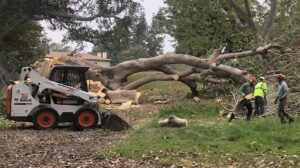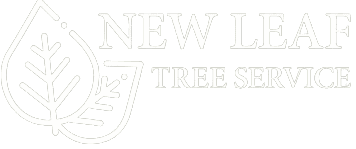Safe Tree Removal in Prospect, KY – A Certified Arborist Case Study
One crisp March morning in Prospect, KY, longtime homeowner Richard Spiers noticed something unsettling—his beloved sugar maple had started leaning closer to the house. Not just a little lean—a “that-might-fall-on-the-gutters” kind of tilt. With curious cracks zigzagging along the trunk and uplifted roots breaking through mulch, Richard knew it was time to call in pros.
Based in Louisville, we specialize in safe, expert-level tree removals across Jefferson and Oldham Counties. With multiple ISA Certified Arborists on staff, we focus on tree health, risk assessments, and careful removals in tight urban spaces like Prospect.
What the Property Needed
Richard’s backyard had limited space—just 8 feet between the trunk and the side of his historic brick home. The sugar maple, once a beauty at around 40 feet tall, had become unstable due to years of compaction, runoff, and subtle erosion. He wanted the tree safely removed with minimal damage to surrounding garden beds and fencing.
How We Got the Job Done
We started with a thorough ISA-certified consultation, visually inspecting the canopy, testing for internal rot, and mapping proximity to structures and utilities.
Then, using climbing gear and low-impact equipment, we executed a piece-by-piece dismantle:
- Used Single Rope Technique (SRT) for upper canopy access
- Set up rigging ropes through friction savers to control direction and drop
- Lowered each limb carefully via pulleys to avoid shock loads
- Used a compact Vermeer skid steer and chipper to speed cleanup

“They were super careful. I had nerves about hurting the garden beds, but they didn’t crush a single hosta. Clean, friendly, and no drama. I’d call them again in a heartbeat.”
— Prospect, KY Homeowner
Challenges We Had to Navigate
- Narrow gate access: We used a tracked mini skid-steer to preserve landscaping.
- Nearby windows: Foam shielding and tension rigging protected the home.
- Weather timing: Scheduled the job between spring rains for ideal soil conditions.
Even small trees can cause major injury if mishandled. Without ropes, safety gear, and proper training, you risk falling limbs, tool injuries—or worse. Leave removals near structures to certified professionals.
“Jobs like this are why we spend so many hours on rigging practice. Everything we cut had to be directed carefully—one slip could’ve cracked a window. But we made the client smile, and that’s what counts.”
– New Leaf Lead Arborist
Certified Safety First
Our work was guided by ANSI A300 arboricultural standards and OSHA safety practices. Every crew member wore climbing-certified helmets, lanyards, gloves, and eye protection. We also did a pre-job wildlife check to ensure no nesting birds were disturbed.
Frequently Asked Questions
How do I know if a tree needs removing or just pruning?
We assess overall vitality, lean direction, decay, root health, and how close it is to structures. If pruning doesn’t resolve structural issues, removal may be safest.
Do I need a city permit to remove a tree in Prospect?
It depends on your exact location and HOA bylaws. We assist homeowners with any necessary paperwork or notifications.
Can I plant a new tree where you ground the stump?
Yes, though we recommend waiting one year or planting slightly offset to reduce soil compacting. We can also amend the soil for best root establishment.
Is stump grinding included in the removal service?
It’s optional but highly recommended for aesthetics and safety. Richard opted in, and it left a clean slate for new landscaping.
What does tree removal usually cost in Prospect, KY?
Costs vary based on height, access, species, and risk level. We offer no-pressure free estimates to remove guesswork.
Suspect a Leaning Tree Near Your Home?
Don’t wait for storm season or structural damage. Let our certified arborists take a closer look and help you decide the safest path forward. Whether it’s pruning, bracing, or removal, we’ve got you covered.
Visit our Tree Removal Services page for more examples and educational resources.
Learn more about proper tree care at the International Society of Arboriculture.
